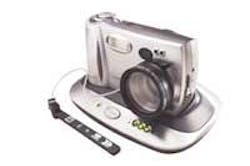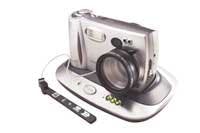The dental imaging Revolution
by Donald S. Sherman, DMD
The digital revolution has arrived in dentistry. Major changes have occurred in both dental hardware and software; however, the greatest change has been with dental-imaging software. The three largest dental practice-management companies have either purchased dental image-management software companies or have produced their own image-management software. Dentrix purchased Vipersoft, PracticeWorks purchased DICOM, and Eaglesoft has written its own image-management product. These imaging programs are now an integral part of their practice-management package. This means that clinicians now can have fully integrated image management as part of their practice management. They can import, adjust, and display patient images as part of tooth-charting. They also can easily track photographs, digital or scanned X-rays, and scanned documents as part of the patient record. Dentists can now document treatment before, during, and after it occurs and also can produce case presentations as well. In addition, stored images easily can be printed out for a lab, a referral to a specialist, or even emailed to patients.
Some insurance companies now accept digital X-ray images, and most accept a paper printout of a digital X-ray. If you scan insurance EOBs into the patient files, your staff can then easily refer to documents and answer patient questions, and either send patients a copy or email it to them. You can also scan referral letters or anything on paper. In addition, you now can easily store nonactive patient records on a CD. If you don't own one of the above practice-management products, you can still use many dental image-management tools, either as a stand-alone product, or with varying degrees of integration with your current practice-management software.
The main advantage of a fully integrated product is ease of use and functionality. With a stand-alone image-management product, you can keep the images and still change the practice-management software at a later date.
In the hardware arena, the biggest changes have been in the quality, price, and design of digital cameras. Kodak's DX4900 Dental Digital Camera Kit is a new digital camera developed specifically for dental use that has all attachments, close-up lenses, and measuring aids. The Kodak DX4900 Dental Digital Camera Kit is supremely easy to use. It is available at www.Kodak.com/go/dental. The camera also is available from the following authorized Kodak dealers: Vipersoft, at www.vipersoft.com, Practice-works, www.Practiceworks.com, and Dentrix, www.den trix.com.
A 2-6 megapixel digital camera is far less expensive than two years ago. You can purchase a good digital camera for the dental office for $500 to $1000. The Olympus 2500L, while discontinued, is still available as a Dental Health Kit with all attachments from www. Bhphotovideo.com. It has been very popular with dentists. You also can find digital cameras modified for dental use from www.photomed.net, and from www.Dinecorp.com.
If you decide to buy a digital camera at your local camera store, I strongly recommend that you purchase a camera that can be modified for dental use. The close-ups needed in dentistry require a digital camera that has macro features, or one that accepts a screw-in close-up lens.
The flash that works best for intraoral close-ups is a ring flash. The camera also should have selectable manual focus and manual settings for shutter speed and f-stop. Digital camera manufacturers, such as Canon, Nikon, Fuji, and Minolta, now sell ring-flash units for some of their cameras. A ring-flash unit that will fit many digital cameras can be purchased from www.srelectronics.com.
Since the spring of 2002, there has been a huge drop in the price of digital cameras with interchangeable lenses. Three years ago, it would have cost at least $5,000 to $10,000 to purchase a high-quality digital camera with interchangeable lenses. Today, they are readily available for $2,000 to $3,000 (minus a lens.) If you own a 35mm Canon or Nikon lens, you are in luck. The Canon D60 and the Nikon D100 are about $2,000, and they use lenses that you may already own. The Fuji FinePix S2 Pro, which uses Nikon lenses, is about $2,500. Some feel that the Fuji captures medical and dental images with better color fidelity than Canon or Nikon. The new Sigma SD9, along with a patented and redesigned color-image capture device, is about $3,000.
If you want to scan documents, you can buy a flatbed scanner for $100 to $250. Make sure the model you purchase comes with a USB connection so that you don't have to open your computer to connect it. If you want to scan a large number of paper documents, the Visioneer 9650 scanner, at $600, has a batch feeder to stack documents as they are fed into the scanner.
However, if you also want to scan X-rays, you must purchase a scanner with a built-in or add-on large transparency adapter that will cover a panoramic or cephalometric film. Some inexpensive scanners come with a 4 x 5-inch transparency adapter, but you probably need one that will cover larger films. Expect to pay $700 to $1,000 for a scanner with a large transparency adapter. The Epson 1680U Professional, the Microtek Scanmaker 8700, and the UMAX Powerlook III with UTA-III adapter all come with 8 x 10 transparency adapters. If your X-rays are no larger than 4 x 9, the Epson Perfection 2450 at $400 is very good.
Printing technology also has improved. The cost of color printers is now low enough that dentists may want to consider purchasing a color printer strictly dedicated to printing color photographs and X-rays. Inkjet printing is excellent for color photographs and for black and white X-rays on paper. Laser printers are popular for administrative documents.
While there are many good color inkjet printers, two of the best are the Epson 785EX and the newer 925 model. These printers not only print reasonably fast, high-quality color 8 x 10s, but also come with a roll feeder that holds a roll of four-inch wide paper. You can print color 4 x 6 prints, and only have to cut the paper every 6 inches. In addition, these printers uses archival inks that will last for years. Many popular inkjet color printers do not use archival inks. They can fade in bright room light in one to two years.
Now is the time to bring your office into the digital age. Dental image-management software, digital cameras, printers, and scanners now make it possible at a relatively low cost. The opportunity to improve patient communication and revolutionize office operations with integrated digital technology has arrived.


